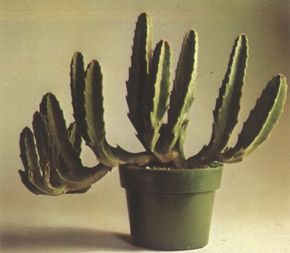Temperature Requirements of Cactus Plants
An environment with the correct temperature and amount of air circulation is essential for cactus and succulent plants to survive, as you probably know. Tremendous differences occur in plants, based on their type.
The plant’s origin will usually give you a good indication of the plant’s temperature and air circulation preferences.
Advertisement
As long as they are dry, most succulents are very tolerant. They can take temperatures from 45°F to 85°F without complaint as long as they are dry.
There are even cacti that survive outside all year long in Canada and Alaska. Succulents don't care for stuffy environments, especially when they are wet.
Keep plants well separated and give them plenty of air. Night temperatures below 65°F and less than 12 hours of light are required to encourage most succulents into bloom.
Most plants prefer a distinct difference between their night and day temperatures; with the night temperature being more important to a plant's growth.
When we refer to types of temperature and air, we generally refer to "cold," "cool," "house," "dry," and "circulating." Here's what those definitions mean:
Cold. Night temperatures of 40° to 45°F.
Cool. Night temperatures of 50° to 55°F. A good many of the old-fashioned favorites are in this category. When these plants look listless and not quite bright, they probably had a bad night.
House. Night temperatures of 60° to 65°F. These are what used to be called stovehouse or hothouse plants.
Dry. The typical modern house, apartment, or office contains half the percentage of moisture that's found in the Sahara.
Circulating. Plants which need fresh air and good ventilation.
Actively growing plants can benefit occasionally from a fertilizer treatment, and cacti and succulents are no exception. In the next section, learn about fertilizing requirements of cactus and succulent plants.
